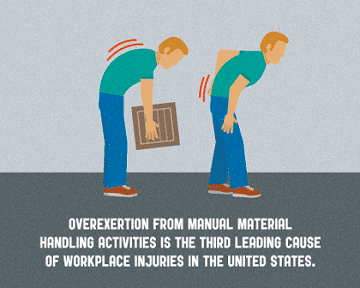Introduction to Palletizing Automation
In the ever-evolving world of manufacturing, automation has become a game-changer. It promises increased efficiency, reduced labor costs, and improved overall productivity. However, for manufacturers inexperienced with robotic automation, taking the first steps can be daunting. Enter automated palletizing, a brilliant starting point that offers a smooth transition into the world of automation. In this blog post, we will explore why robotic palletizing is the ideal choice for manufacturers new to automation.
Safety First: Palletizing Reduces Workers Comp Claims
The safety of your employees should always be a top priority. Palletizing by hand has traditionally been a labor-intensive and physically demanding task, making it the number one source of workers' compensation claims in manufacturing facilities. Lifting heavy boxes, repeatedly bending, and handling unwieldy loads can lead to musculoskeletal injuries and other health issues. By introducing robotic palletizing systems, manufacturers can dramatically reduce the risk of workplace injuries, ensuring a safer and healthier work environment.
Robotic automated palletizing systems are designed to handle heavy loads and repetitive tasks with precision, reducing the need for human intervention in these potentially hazardous situations. This not only safeguards your workers but also mitigates the financial burden of workers' compensation claims, making it a wise investment for your manufacturing operations.

Source: CDC
Standardization of Box Sizes and Weights
Manufacturers often deal with a wide variety of products and packaging, making automation a challenging proposition. However, automated palletizing offers a unique advantage in this regard. When compared to other production processes, the box sizes and weights in palletizing tend to be more standardized. This means that manufacturers can create and program pallet stacking robots to handle a consistent range of box sizes and weights, simplifying the integration of new end of line automation into the workflow.
This standardization streamlines the process of programming and setting up pallet stacking robot systems. With fewer variables to account for, manufacturers can implement automation more efficiently and with fewer hurdles. Additionally, the ability to use standard pallet sizes further enhances the ease of automation integration.
Minimal Disruption to Production Lines
Another reason why palletizing is a great starting point for automation is its position in the production process. Typically, palletizing is one of the last steps in the manufacturing workflow, just before products are shipped to customers or distributors. This positioning makes it an ideal candidate for automation because any changes or disruptions primarily impact a single upstream process.
Compared to other stages in the production line, making adjustments to the palletizing process is less likely to cause a ripple effect throughout the entire production line. This minimizes the risk of costly downtime and ensures that other operations are not compromised during the transition to automation. Manufacturers can experiment with automation without overhauling their entire workflow, gradually building confidence in their automation capabilities.
Flexibility and Adaptability
Automated palletizing systems are typically built to withstand a range of weights and speeds, allowing them to accommodate ongoing variances in box sizes and weights within their capabilities. This adaptability is essential for manufacturers who deal with changing product lines, seasonal variations, or evolving customer demands.
Modern robotic palletizing systems can be programmed to handle various box sizes and weights, and they can quickly adapt to new requirements. Some more modern palletizing systems give non-technical operators the ability to add new pallet patterns on the fly. This flexibility reduces the need for significant reconfiguration, making it easier for manufacturers to respond to market changes without extensive downtime or costly modifications.
Furthermore, many pallet stacking robots come equipped with vision systems that can identify products and adjust their movements accordingly. This level of automation intelligence enables seamless adaptation to different packaging requirements and contributes to the overall efficiency of the palletizing process.
Conclusion
In conclusion, automated palletizing serves as a perfect starting point for manufacturers new to robotic automation for several compelling reasons. Not only does it enhance worker safety and reduce workers' compensation claims, but it also benefits from standardized box sizes and weights, minimizing the complexity of automation integration. Its position in the production line allows for minimal disruption to the workflow, and its inherent flexibility ensures adaptability to changing demands.
By embracing automated palletizing as the starting point for automation, manufacturers can embark on a journey toward improved efficiency, reduced costs, and increased productivity with confidence. As they gain experience with automation, they can then explore further automation opportunities within their production processes. The path to a more automated future begins with the humble palletizing robot, proving that small steps can lead to significant advancements in manufacturing.


